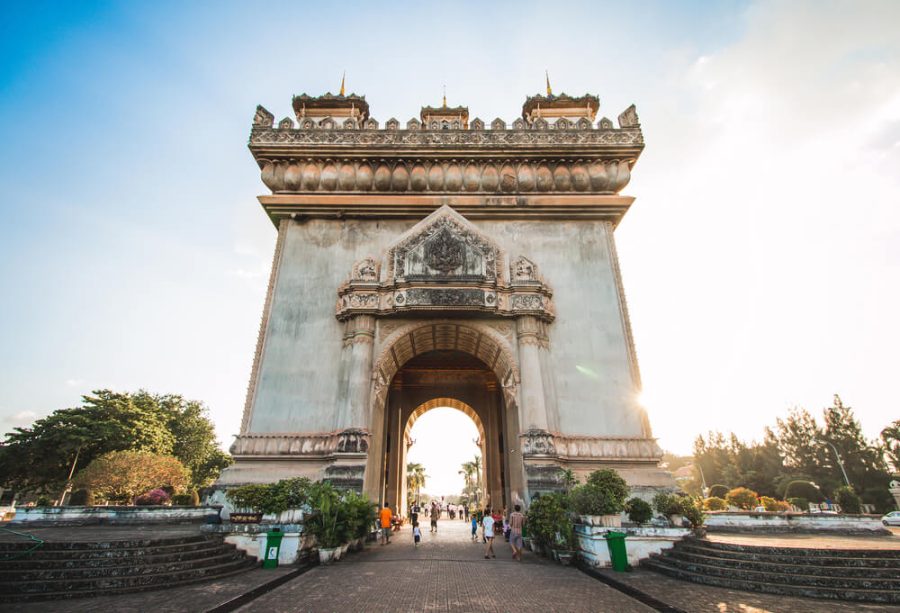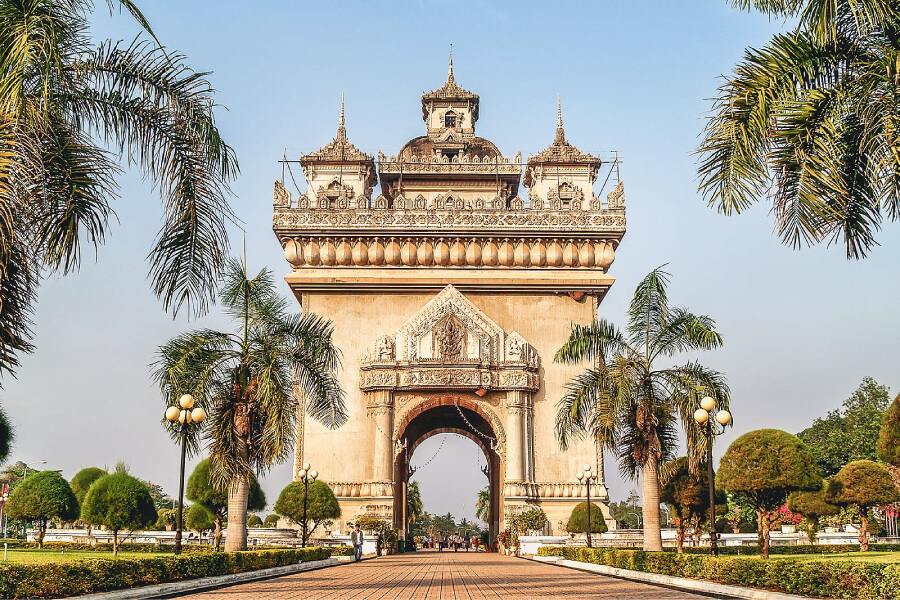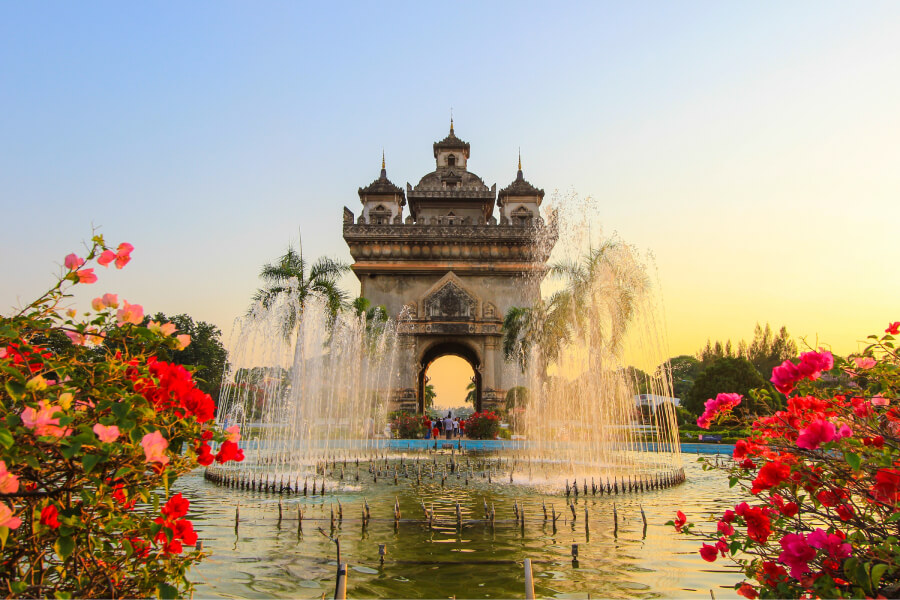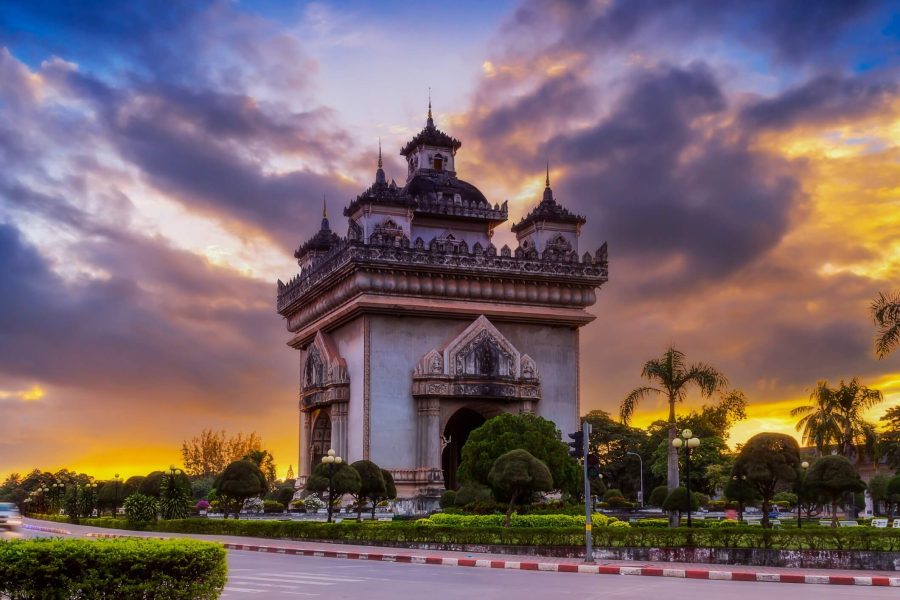Exploring the Prime Location of Patuxay Monument in Vientiane
In the heart of Vientiane, the capital city of Laos, the Patuxay Monument proudly graces the cityscape. This iconic landmark, celebrated for its historical significance and architectural beauty, is also a strategic location and a central point of interest for those on Laos tours, making it easily accessible and a must-visit attraction.
Central Location in Vientiane
Patuxay Monument enjoys a prime location in the heart of Vientiane. It stands prominently on Lane Xang Avenue, one of the city's major thoroughfares, and serves as a central point of reference for both locals and visitors. This accessibility makes it an ideal starting point for exploring the city and its rich cultural heritage.
Nearby Landmarks
Presidential Palace: The Patuxay Monument is within close proximity to the Presidential Palace, adding to the historical and governmental significance of this area.
That Dam Stupa: Just a short walk away, you'll discover the mysterious and ancient That Dam Stupa, which adds to the historical charm of the neighborhood.
Wat Si Saket: This ancient temple, known for its thousands of Buddha images, is located nearby, providing a glimpse into Laotian Buddhist culture and history.
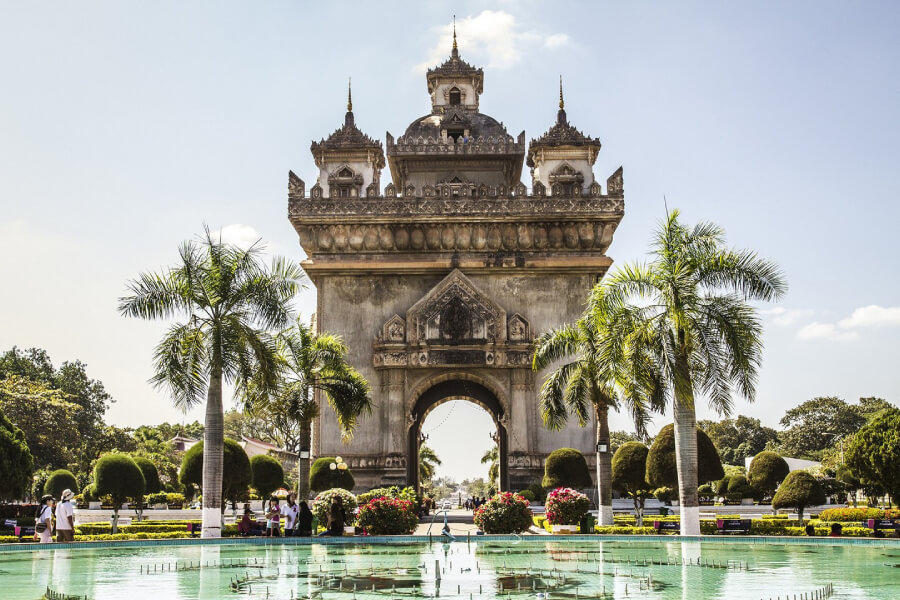
Convenience for Tourists
Ease of Access: Travelers can easily locate and reach the monument by various means of transportation, including tuk-tuks, bicycles, or on foot.
Tourist Services: Surrounding the monument, you'll find numerous services catering to tourists, such as souvenir shops, cafes, and tour operators.
Historical Context: The monument's location in the city center allows visitors to understand its historical context and appreciate the role it played in Laos' struggle for independence.
Observation Deck: The strategic location also offers sweeping views of Vientiane, making it an ideal starting point to get your bearings in the city.
Architectural Beauty of Patuxay Monument
Harmonious Fusion of Styles: At first glance, Patuxay's architectural beauty is immediately apparent. The monument is a harmonious fusion of Laotian and French architectural styles, showcasing an elegant blend that captivates the eye. This unique approach serves as a reminder of Laos' historical ties to France and its fight for independence.
Ornate Carvings and Balustrades: One of the most striking features of the monument is its intricate carvings and ornate balustrades. As you approach the monument, you'll notice elaborate floral motifs and detailed designs that adorn its façade. These embellishments are a testament to the skilled craftsmanship of the artisans who dedicated themselves to this project.
Mythological Nāga Guardians: Standing guard at the entrance of Patuxuay are the mythological Nāga, a multi-headed serpent known for its protective qualities. The Nāga figures here, with their sculpted details and lifelike expressions, add a touch of mystique and cultural significance to the monument's architectural design.
The Seven-Headed Nāga Fountain: At the base of Patuxay Monument, you'll find a stunning seven-headed Nāga fountain. This exquisite water feature not only enhances the beauty of the surroundings but also pays homage to Lao mythology and traditions.
A Triumph of Design: As you ascend the monument's steep stairs, you'll be rewarded with an observation deck that offers panoramic views of Vientiane. The design of this deck allows for unobstructed vistas of the city, providing a remarkable experience that adds to the architectural beauty of the monument.
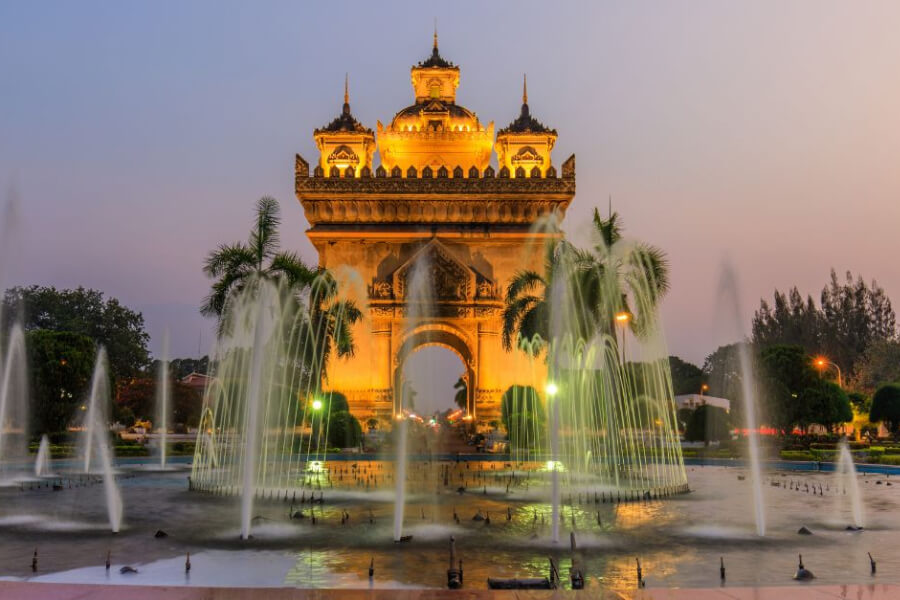
Unearthing the Historical Significance of Patuxay Monument in Vientiane
A Monument of Independence: The Patuxay Monument was constructed between 1957 and 1968 as a tribute to the Lao people who fought for their nation's independence from French colonial rule and the royal kingdom. It stands as a symbol of victory and self-determination, a beacon of hope for the people of Laos.
Colonial Past and the Fight for Freedom: During the colonial period, Laos, like many Southeast Asian nations, was under French colonial rule. The struggle for independence was marked by years of resistance and determination. Patuxay Monument serves as a living memory of this era, honoring those who made sacrifices for the cause.
Architectural Symbolism: The design of Patuxuay itself is a representation of this struggle. It was inspired by the Arc de Triomphe in Paris, reflecting the historical ties to France. However, it was constructed using funds and resources intended for a new airport, leading to its nickname, the "Vertical Runway." The use of war materials in its construction highlights the nation's dedication to its fight for independence.
War Memorial and Museum: At its core, Patuxay serves as a war memorial, housing a small museum dedicated to the Lao struggle for independence. Inside, you'll find exhibits and artifacts that tell the story of the nation's historical journey to sovereignty, making it an essential educational site for both locals and visitors.
A National Icon: Patuxay Monument is more than a historical relic; it is a living icon of Laos' past and its ongoing commitment to preserving its rich heritage. It is a place where the echoes of the nation's history can still be heard, offering a connection to a time when a determined nation fought for its freedom.
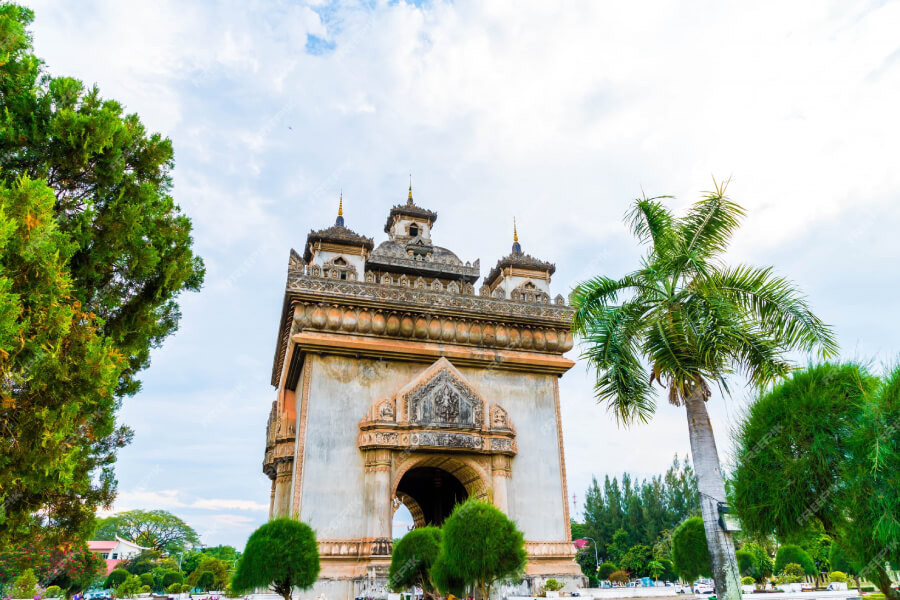
Cultural Significance of Patuxay Monument: A Proud Symbol of Laotian Heritage
A Cultural Beacon: Patuxay Monument isn't merely a structure; it's a living cultural beacon. It represents the collective cultural identity and the proud history of Laos. The monument's design incorporates elements of traditional Lao architecture, intertwining it with the nation's struggle for independence.
Wat Phra Keo Connection: A cultural thread connecting Patuxay to Laotian heritage is its association with Wat Phra Keo, the Temple of the Emerald Buddha. The monument was constructed with stones from the original temple, enhancing its cultural significance. The use of these stones not only preserves the cultural legacy but also adds to the mystique of Patuxuay.
Mythological Symbolism: The seven-headed Nāga statues that guard the entrance of Patuxuay are deeply rooted in Lao mythology. The Nāga, a multi-headed serpent, is a revered symbol in Laotian culture. These statues are believed to offer protection and good fortune, serving as a spiritual connection to the nation's cultural beliefs.
Celebrating National Festivals: Patuxay serves as a focal point for celebrating national festivals and cultural events. It becomes a hub of activity during festivals like Lao New Year (Pi Mai Lao), providing a space for cultural performances, ceremonies, and community gatherings that connect the present with the country's historical roots.
Cultural Preservation: The cultural significance of Patuxuay goes beyond aesthetics. It stands as a testament to the nation's commitment to preserving its cultural heritage while embracing modernity. The monument encapsulates the essence of Laotian culture and serves as a source of inspiration for future generations.
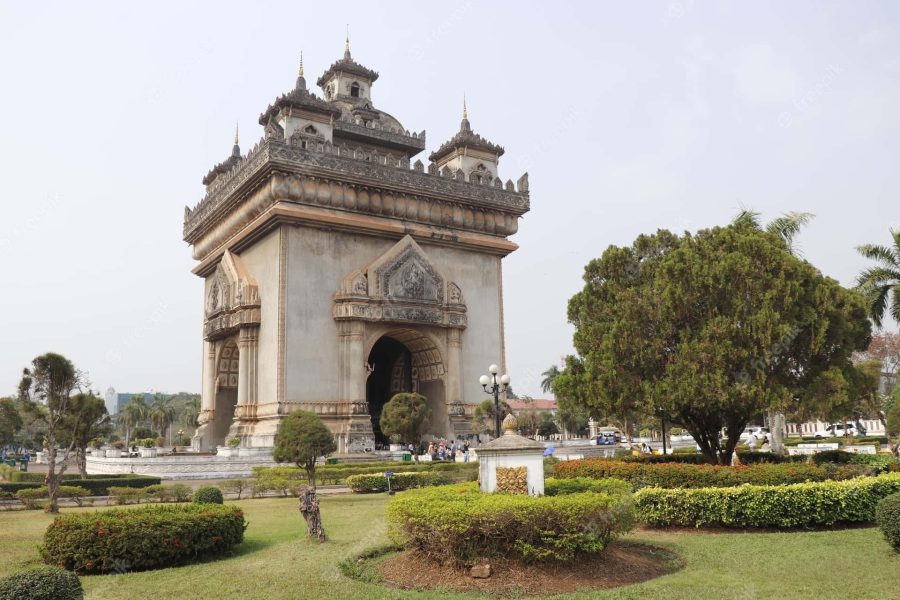
Visiting Patuxay Monument: Your Comprehensive Guide to Practical Information
1. Opening Hours
Days of Operation: Patuxay Monument is open every day of the week from 8:00 AM to 5:00 PM
2. Entrance Fees
General Entry: There is no fee to walk around the Patuxay Monument. It's free to visit and explore the exterior of the monument.
Observation Deck: If you wish to ascend to the top of the monument and enjoy the panoramic views from the observation deck, there is a modest fee of 3,000 kip, which is equivalent to less than one US Dollar. This fee provides access to the elevated viewpoint, where you can capture breathtaking views of Vientiane.
3. Dress Code
Respectful Attire: When visiting Patuxay and the surrounding temples, it's important to dress respectfully. This typically means covering your shoulders and knees. As a sign of respect, it's advisable to remove your shoes before entering temple areas.
